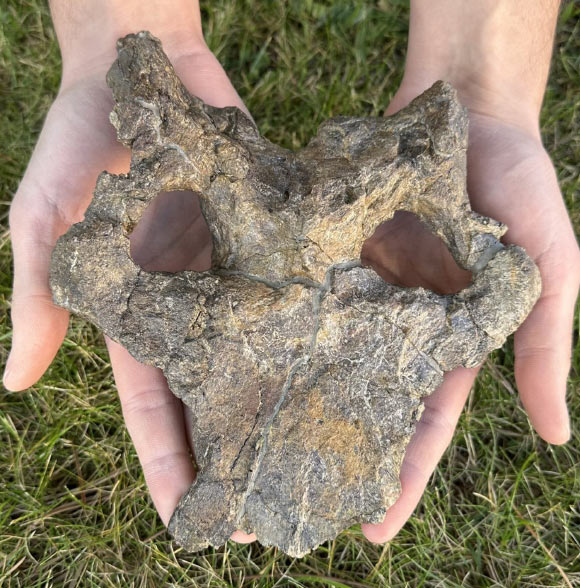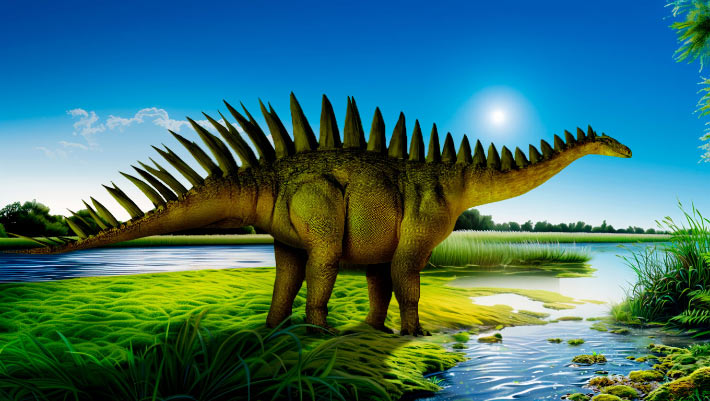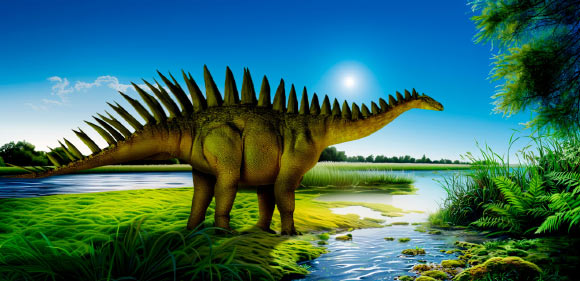Paleontologists have recovered the dinosaur skull material from beds of the Upper Jurassic Villar del Arzobispo Formation in Teruel, Spain, and confidently assigned it to a stegosaurian species called Dacentrurus armatus.

The skull of Dacentrurus armatus from the Villar del Arzobispo Formation in Teruel, Spain. Image credit: S. Sánchez-Fenollosa & A. Cobos, doi: 10.3897/vz.75.e146618.
The name Stegosauria was first proposed in 1877 and the first stegosaur, Dacentrurus armatus, was described two years earlier.
Stegosauria is a small clade of thyreophoran dinosaurs that includes some iconic and recognizable members, such as the genus Stegosaurus.
They were quadrupedal herbivores mainly characterized by two rows of osteoderms (plates and spines) that extend from the neck to the tail end.
The stegosaurs are known from, at least, the Middle Jurassic to possibly the Late Cretaceous in sediments from almost worldwide, but mostly represented by single partial skeletons.
The stegosaurian skull material is remarkably fragmentary and scarce in the fossil record.
Nearly half of the current scientifically recognized species of stegosaurs do not preserve skull material.
In a new study, Fundación Dinópolis paleontologists Sergio Sánchez Fenollosa and Alberto Cobos examined the skull of Dacentrurus armatus, a species of stegosaurian dinosaur that lived around 150 million years ago in Europe.
“The detailed study of this exceptional fossil allowed us to reveal previously unknown aspects of the anatomy of Dacentrurus armatus, the quintessential European stegosaur,” Dr. Sánchez Fenollosa said.
“Dinosaurian skulls are rarely preserved due to the extreme fragility of their bones.”
“This discovery is key to understanding how stegosaurian skulls evolved.”
“Furthermore, alongside the anatomical study, we also proposed a new hypothesis that redefines the evolutionary relationships of stegosaurs worldwide.”
“As a result of this work, we have formalized the definition of a new group called Neostegosauria.”
According to the researchers, Neostegosauria includes medium to large-sized stegosaurian species that lived in what is now Africa and Europe during the Middle and Late Jurassic, in North America during the Late Jurassic, and in Asia during the Late Jurassic and Early Cretaceous.
“This dual achievement — both the study of an exceptional fossil and the proposal of a new evolutionary hypothesis — positions this research as a global reference in stegosaurian studies,” Dr. Cobos said.
“This fossil site from Riodeva continues to be a subject of research and still holds numerous relevant fossils, including more postcranial elements from the same adult specimen and, notably, juvenile individuals, a particularly rare combination in this type of dinosaurs.”
“These discoveries continue to exponentially increase the palaeontological heritage of the province of Teruel, making it one of the iconic regions for understanding the evolution of life on Earth.”
The team’s paper was published on May 26, 2025 in the journal Vertebrate Zoology.
_____
S. Sánchez-Fenollosa & A. Cobos. 2025. New insights into the phylogeny and skull evolution of stegosaurian dinosaurs: An extraordinary cranium from the European Late Jurassic (Dinosauria: Stegosauria). Vertebrate Zoology 75: 165-189; doi: 10.3897/vz.75.e146618

